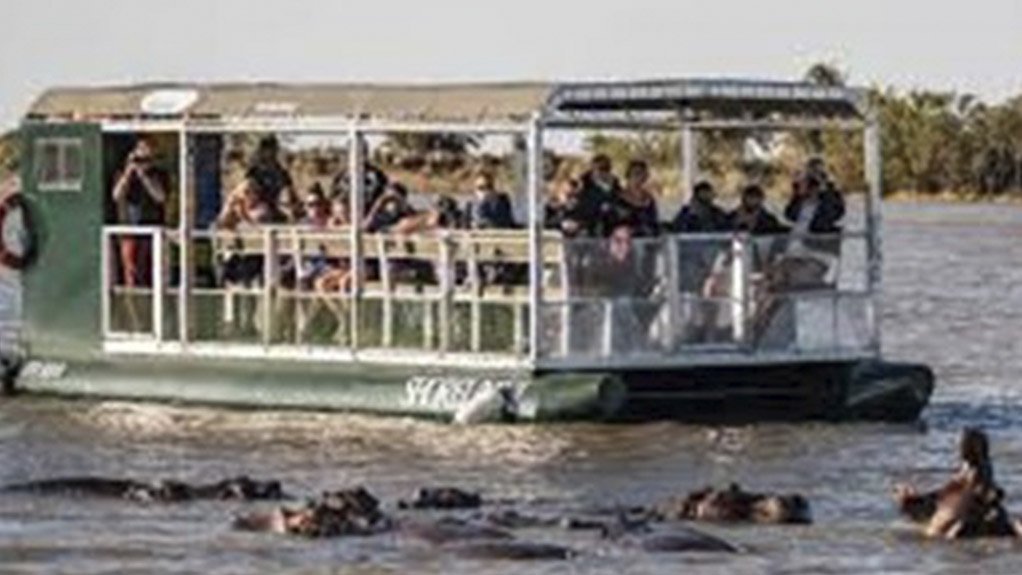Estuaries and their importance
This article has been supplied as a media statement and is not written by Creamer Media. It may be available only for a limited time on this website.
(Virtual Showroom): An estuary is an intermittently open/closed coastal body of brackish water, which is typically connected to one or more rivers/streams/tributaries flowing into it, which eventually connects with the ocean at the lower reaches (National Biodiversity Assessment (NBA), 2018).
Estuaries are influenced by natural environmental processes such as tides, wave action, influx of saline water from the ocean, freshwater and sediment input from the riverine upstream rivers and tributaries. The mixing of seawater and freshwater provides high levels of nutrients both in the water column and in sediment, making estuaries among the most productive natural habitats in the world (NBA, 2018).
The classification of estuaries are due to their geomorphological features or water circulation patterns. Dependent on the geomorphological features, water circulation patterns and in some instances human induced changes, estuaries are classified as bays, harbours, lagoons, inlets, temporarily open close or permanent opened (NBA, 2018).
Estuaries provide goods and services that are not only ecologically indispensable, but play a vital role from an economic perspective. The following are several different important values of estuaries and a brief explanation of each (Haines-Young and Potschin, 2010).
Social Value
Estuaries hold a significant commercial value in supporting industries such as tourism, fisheries and recreational facilities. In many provinces in South Africa, approximately 80% of the population live in close proximity to coastal zone and/or estuarine environments which are of great culture, economic importance and scenic beauty to the general community.
Wildlife
Estuaries play a vital role as acting as a place of refugia, feeding grounds and a nursery for thousands of birds, mammals, fish and other aquatic organisms. Birds typically utilise these areas for feeding and resting during a migratory journey. Several aquatic organisms (fish and shellfish) utilise these areas for shelter, spawning and through a certain portion of their lifecycle, giving these environments the name known as the “nursey of the sea.”
Recreation
Estuaries provide humans with several opportunities for recreational activities ranging from boating, fishing, swimming, diving, windsurfing, bird watching and even just taking in the scenic beauty of the estuary and surrounding wildlife that inhibits the environment.
Cultural Benefit
Historically, estuaries are often regarded as cultural centres of coastal communities and serve as the focal point for local commerce, tourism and recreational activities. Furthermore, estuaries also have significance for local
Scientific Benefit
As the nature of estuaries being a transition zone between land and water; and freshwater and marine water, estuaries are invaluable areas for scientist and students who want to study the complexity of biology, chemistry, geology, history and social issues. Over the years, scientist have found the need to conserve these environments as they are critical for the livelihoods of mankind.
Economic Benefit
Tourism and fisheries are major commercial activities that rely and thrive on the natural resources provided by estuaries. Commercial fishing in estuaries, especially certain Ports in South Africa (Port of Ceoga) acquire millions of rands from commercial fishing. Further to this, sand mining operations in estuaries provide millions of rands to the building industry. Most importantly, the protected nature of coastal waters in estuaries also support public infrastructure, servings as harbours/ports for vital importing and exporting activities.
Several estuaries within South Africa suffer degradation as a result of anthropogenic activities including; erosion within the system and catchment, deforestation in the surrounding catchment, overfishing, eutrophic conditions as a result of discharge of poorly treated effluent and damming or water diversion of the natural flow, typically causing sedimentation at certain points of the estuary (Hillborn et al., 2003). It is imperative that mankind does not further degrade these important systems as they play a crucial role from an economic and ecological perspective to humans and the natural environment.
ENVASS can offer services linked monitoring of estuarine environments such as water and soil quality monitoring, benthic sampling to measure health of estuary and Coastal Geomorphological Assessments.
Comments
Press Office
Announcements
What's On
Subscribe to improve your user experience...
Option 1 (equivalent of R125 a month):
Receive a weekly copy of Creamer Media's Engineering News & Mining Weekly magazine
(print copy for those in South Africa and e-magazine for those outside of South Africa)
Receive daily email newsletters
Access to full search results
Access archive of magazine back copies
Access to Projects in Progress
Access to ONE Research Report of your choice in PDF format
Option 2 (equivalent of R375 a month):
All benefits from Option 1
PLUS
Access to Creamer Media's Research Channel Africa for ALL Research Reports, in PDF format, on various industrial and mining sectors
including Electricity; Water; Energy Transition; Hydrogen; Roads, Rail and Ports; Coal; Gold; Platinum; Battery Metals; etc.
Already a subscriber?
Forgotten your password?
Receive weekly copy of Creamer Media's Engineering News & Mining Weekly magazine (print copy for those in South Africa and e-magazine for those outside of South Africa)
➕
Recieve daily email newsletters
➕
Access to full search results
➕
Access archive of magazine back copies
➕
Access to Projects in Progress
➕
Access to ONE Research Report of your choice in PDF format
RESEARCH CHANNEL AFRICA
R4500 (equivalent of R375 a month)
SUBSCRIBEAll benefits from Option 1
➕
Access to Creamer Media's Research Channel Africa for ALL Research Reports on various industrial and mining sectors, in PDF format, including on:
Electricity
➕
Water
➕
Energy Transition
➕
Hydrogen
➕
Roads, Rail and Ports
➕
Coal
➕
Gold
➕
Platinum
➕
Battery Metals
➕
etc.
Receive all benefits from Option 1 or Option 2 delivered to numerous people at your company
➕
Multiple User names and Passwords for simultaneous log-ins
➕
Intranet integration access to all in your organisation





















